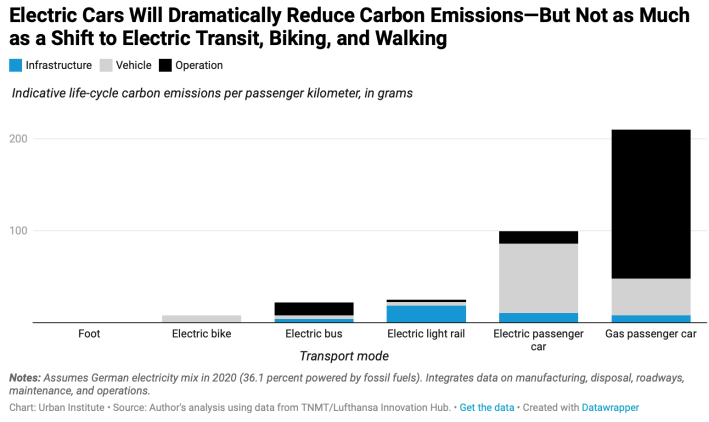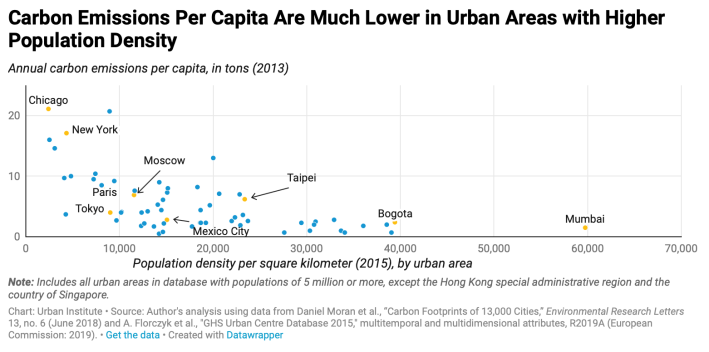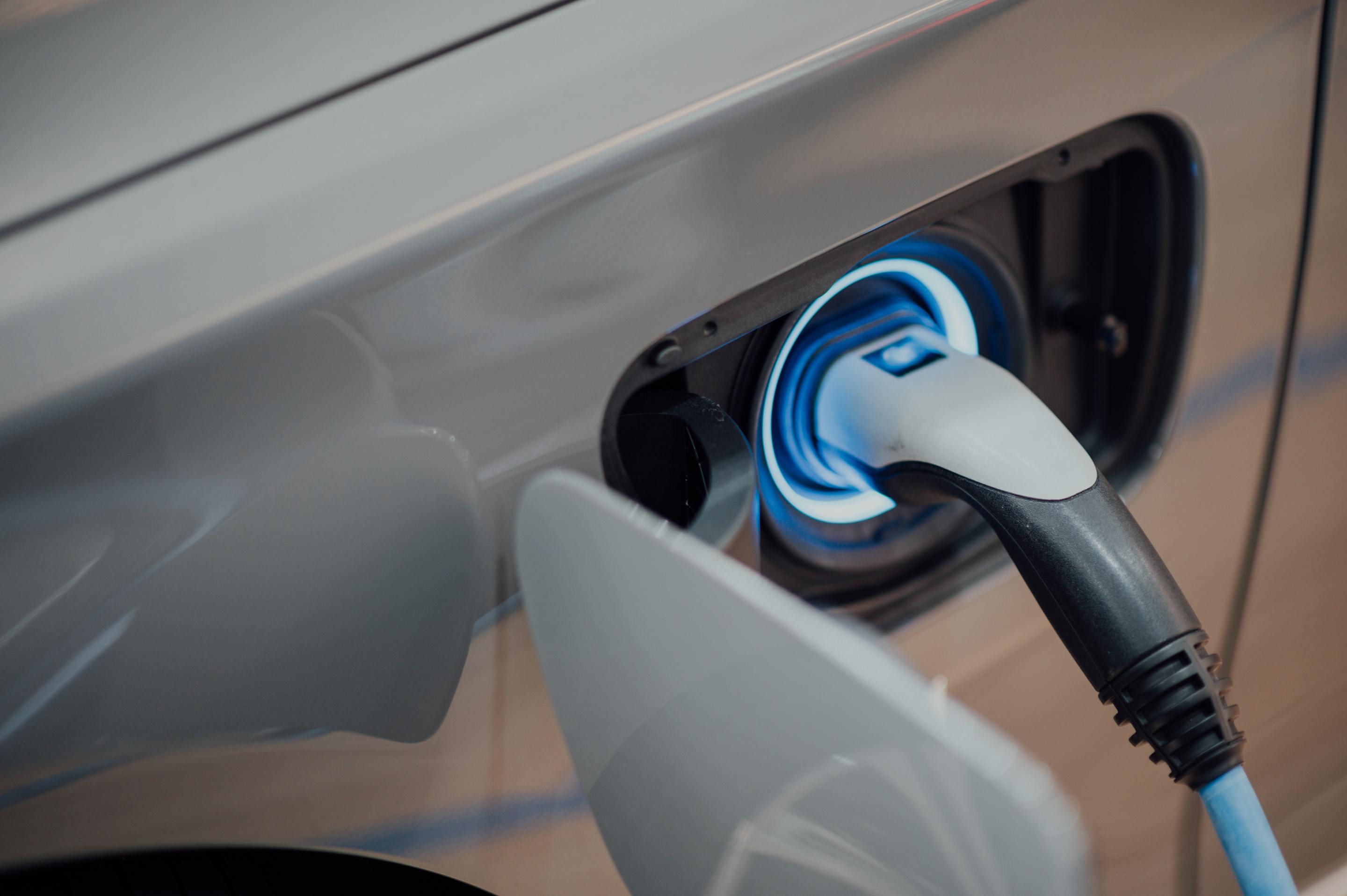What the Inflation Reduction Act Will — And Won’t — Do For Sustainable Transportation
12:01 AM EDT on September 23, 2022
Editor's note: This article was originally published on Urban Wire, the blog of the Urban Institute, and is republished with permission.

Last month, Congress passed the Inflation Reduction Act, the nation’s first major investment in climate change mitigation. The law is expected to reduce the country’s greenhouse gas emissions by channeling funding through tax credits, loans, and grants—taking a major step to position the administration to meet its goal of reducing U.S. emissions by 50 percent by 2030 and fulfill Paris Agreement guidelines.
The IRA supports transportation electrification through new funds for manufacturing plant upgrades. The law will also provide tax credits of up to $7,500 for consumers buying new and used zero-emissions cars and trucks, plus up to $40,000 for purchasers of electrified commercial vehicles. Its investments complement those in 2021’s Infrastructure Investment and Jobs Act, which will fund transportation capital projects, such as new roads and transit.
But the IRA’s transportation elements—focused on road vehicle electrification—are inadequate. The transport sector is the largest contributor to U.S. emissions and a major cause of global climate change. Focusing on electric cars and trucks is unlikely to quickly reduce emissions and fails to account for the resource intensity of car manufacturing, noncarbon pollution produced by vehicles, and the unsustainable land uses car dependence produces.
The IRA is an important step, but to achieve an environmentally sustainable transportation system, it must be complemented by additional federal, state, and local action.
Electric cars will help reduce carbon emissions — but not by enough
Carbon emissions from new cars sold in the US have fallen since the mid-2000s, but not as quickly as in peer countries. New cars emit more than twice as much carbon as French ones, and while 45 percent of new cars in the United Kingdom were electric or hybrid in 2021, fewer than 10 percent of those were. One reason is the deficit of electric cars available; about one-third as many models are for sale as in Europe. Another is the dominance of energy-consumptive trucks and sport-utility vehicles in the U.S.
Proponents contend the IRA’s consumer tax credits for new electric vehicles could accelerate vehicular fleet electrification. But eligibility requirements are narrow, and most electric cars don’t qualify because the credits cap vehicle costs; require domestic assembly, domestic batteries, and/or battery minerals from certain countries; and exclude high-income purchasers.
Electric cars are also more expensive than gas-powered ones, and though some estimates project considerable transportation emissions reductions with the IRA, others model just 1–2 percent reductions this decade, in part because even with the vehicle credits, fewer than 20 percent of all vehicles will be zero-emission by 2030.
Still, electric cars can help. Even accounting for emissions from minerals mining for batteries, those produced during manufacturing, and those from electricity production to power them, over their lifetime, electric cars emit half as much as, or even less than, gas-powered cars.
But emissions vary. Larger electric cars powered by mostly fossil fuel-based electricity produce twice the lifetime pollution as smaller ones in France, where the vast majority of power is zero-emission.
Electric vehicles’ relative benefits will improve as the power sector becomes more based on renewables, as battery recycling advances, and as battery production shifts out of carbon-producing manufacturing plants.
Though this is good news, the potential benefits of electric cars pale compared with those produced by electrified public transportation and increasing biking and walking—each of which emit dramatically less than electric cars.
Yet the IRA provides no direct incentives for people to take transit, bike, or walk; rather, it further subsidizes driving—even though reducing emissions would occur more quicklyif people got out of their cars.

Travel by foot, bike, and public transportation emits less carbon by leveraging resource efficiencies. Public transit allows more efficient use of urban roadways than automobiles, and, when electrified, its carbon emissions can be a third of those of electric cars. A mode shift to electric bikes would also significantly reduce emissions, in part because electric bikes consume less power and their batteries require far fewer minerals than electric cars.
Travel by bike and foot is more feasible when urban environments are denser. Per capita carbon emissions in relatively sprawling metropolitan areas, like the Chicago region — including both the city and its suburbs — are three to four times higher than in the Paris and Tokyo regions, where population densities overall are two to three times higher. Those urban areas have many more neighborhoods where it’s feasible to walk, bike, or ride transit. Carbon emissions are even lower in very dense regions like Bogota or Mumbai.
In the United States, cities with high population densities where transit, biking, and walking is feasible have lower carbon emissions than their suburbs, where car dependence is high.

Car dependence threatens everyone’s environmental health and safety
Much of the IRA’s focus is on reducing carbon emissions, but the transportation sector has other environmental effects that continued automobile dependence will not address – and, in some cases, it may worsen them.
All modes of road transport, including electric vehicles, emit air pollution from brakes, tires, and dust. Combined with tailpipe emissions, they cause lung disease and contribute to hundreds of thousands of premature deaths annually. People of color and people with low incomes are disproportionately exposed to this pollution because of structural barriers, many rooted in policies designed to enforce systemic racism.
Electric cars use batteries made of minerals like lithium, graphite, nickel, and cobalt. Mining them often destroys the environments of the affected areas.
And because low population density and sprawl is a consequence of car dependence, residents and businesses require more land per capita, which degrades environmental quality and ecosystem services vital for everyone’s health and quality of life. And as development advances into wildlands around cities, native species are threatened, and people face an even greater risk of wildfires, which are increasing because of climate change.
Building an environmentally sustainable transportation system
The IRA takes a leap forward in promoting vehicular electrification, but it is just a first step. To increase environmental sustainability, federal, state, and local policymakers need to plan for a less car-dependent future with a less resource-intensive transportation system. That could mean the following:
- tax credits or other benefits to buy electric bikes, like Denver’s rebates with incentives for people with low incomes
- improved bus and rail through operations grants
- electrification of transit lines, like Toronto is doing—the 2021 infrastructure law provides some money for electric buses
- more resource-efficient land-use planning that reduces neighborhood car dependency and aligns transport projects with housing and commerce
Policies promoting fewer cars and denser, walkable communities reduce car emissions dramatically. These steps could further reduce the transportation sector’s carbon effects and help the United States reach its Paris Agreement goals.
Yonah Freemark is the research director of the Land Use Lab at Urban Institute.
Read More:
Stay in touch
Sign up for our free newsletter
More from Streetsblog USA
Talking Headways Podcast: Highway Fighting in Texas
Jeff Wood talks to Megan Kimble about an amazing footnote to the creation of the Interstate Highway system.
The Dawn of the ‘Non-Driver’ Movement: A Conversation with Anna Zivarts
"At the end of the day, there are going to be folks who still can't drive and can't afford to drive — and there are still going to be a lot of us."
Thursday’s Headlines Fight a Suburban War
The way Politico lays out the battle lines, it's not just drivers versus transit users, but urban transit users versus suburban ones.
California Leaders Celebrate Ten Years of Climate Action
Air Resources Board report highlights progress funded by the California Cap-and-Trade Program.
How Car-Centric Cities Make Caring For Families Stressful — Particularly For Women
Women do a disproportionate share of the care-related travel their households rely on — and car-focused planning isn't making matters easier.





